Mechanical Performance Study of Beam–Column Connection with U-Shaped Steel Damper
Abstract
:1. Introduction
2. U-Shaped Steel-Damper Model
2.1. Vertical Direction
- l = length of the straight section;
- I = moment of inertia of the section.
2.2. Horizontal Direction
3. Quasi-Static Testing
3.1. Test Equipment
3.2. Initial Stiffness

3.3. Yield Load
3.4. Test Loading System
4. Mechanical Property Analysis
4.1. Result Analysis
4.2. Seismic Performance Parameter Analysis
5. Finite Element Analysis
5.1. Finite Element Model
5.2. Result Analysis
5.3. Mechanical Property Analysis of Plane Frame
5.3.1. Frame Structure Design
5.3.2. Finite Element Model of Frame Structure
5.3.3. Pushover Analysis
- (1)
- The relationship curve between the story’s sheer force and the story’s angle of deformation is shown.
- (2)
- Stress-response analysis
6. Conclusions
- (1)
- The theoretical formulas of relevant parameters of connections are derived using the unit load method, and the quasi-static test under cyclic load is performed. The error range of the initial stiffness and yield load obtained by the test and the theoretical formula is kept within 20%, indicating that the theoretical formula is reasonable and feasible.
- (2)
- The beam–column connection has full and stable hysteretic curves, good hysteretic properties, and good ductility in the cyclic loading test. The metal damper in the shape of a U can absorb energy before the beam and column yield, and the beam and column are always in elastic response.
- (3)
- According to the finite element analysis, the overall trend of the skeleton curve of the test is basically similar to that of the finite element calculation curve, and the peak point is also relatively consistent. The error range between the initial stiffness and yield load obtained from the test and the finite element calculation were kept within 20%. Thus, the correctness of the model is verified.
- (4)
- A numerical simulation of a multi-story and multi-span plane frame is performed on the basis of verifying the model’s correctness. In comparison to the rigid connection model, the U-shaped damper enters the yield energy dissipation before the main structure, preventing the main structure from gradually losing bearing capacity due to the failure of the first-floor connection domain and improving the seismic performance of the main structure. As a result, the main structure is safe from harm.
Author Contributions
Funding
Institutional Review Board Statement
Informed Consent Statement
Data Availability Statement
Acknowledgments
Conflicts of Interest
References
- Xie, L.; Qu, Z. On Civil Engineering Disasters and Their Prevention. J. Nat. Disasters 2016, 25, 1–10. [Google Scholar]
- Jia, H.; Lin, J.; Liu, J. A Summary of the Development Trend of Global Earthquake Disasters. Earthq. Disaster Prev. Technol. 2019, 14, 821–828. [Google Scholar]
- Yang, Z.; Lan, H.; Zhang, Y.; Guo, C. Review on Long-Term Activity of Post-Earthquake Geological Hazards in Strong Earthquake Areas. J. Geomech. 2017, 23, 743–753. [Google Scholar]
- Gutscher, D. Development and Evaluation of Improved Rail Welding and Weld Treatment Methods. Railw. Track Struct. 2008, 104, 21+24–25. [Google Scholar]
- Chen, B.; Wang, D.; Chen, S.; Hu, S. Influence of site factors on offshore ground motions: Observed results and numerical simulation. Soil Dyn. Earthq. Eng. 2021, 145, 106729. [Google Scholar] [CrossRef]
- Kou, S.; Zhang, X.; Li, W.; Song, C. Dynamic Response Parameter Analysis of Steel Frame Joints under Blast Loading. Buildings 2022, 12, 433. [Google Scholar] [CrossRef]
- Miller, D.K. Lessons Learned from the Northridge Earthquake. Eng. Struct. 1998, 20, 249–260. [Google Scholar] [CrossRef]
- Nakashima, M.; Inoue, K.; Tada, M. Classification of Damage to Steel Buildings Observed in the 1995 Hyogoken-Nanbu Earthquake. Eng. Struct. 1998, 20, 271–281. [Google Scholar] [CrossRef]
- Riclesa, J.; Fisher, J.; Lu, L.; Kaufmannb, E. Development of Improved Welded Moment Connections for Earthquake-Resistant Design. J. Constr. Steel Res. 2002, 58, 565–604. [Google Scholar] [CrossRef]
- Shi, Y.; Wang, M.; Wang, Y. Chen Hong Finite Element Analysis of Hysteretic Behavior of Improved Beam Column Joints in Steel Frames. J. Shenyang Archit. Univ. (Nat. Sci. Ed.) 2010, 26, 205–210. [Google Scholar]
- Kim, Y.; Oh, S. Effect of the Moment Transfer Efficiency of a Beam Web on Deformation Capacity at Box Column-To-H Beam Connections. J. Constr. Steel Res. 2006, 63, 24–36. [Google Scholar] [CrossRef]
- Liu, X.; Yang, Z.; Wang, H.; Zhang, A.; Pu, S.; Chai, S. Seismic Performance of H-Section Beam to HSS Column Connection in Prefabricated Structures. Constr. Steel Res. 2017, 138, 1–16. [Google Scholar] [CrossRef]
- Chen, J.; Su, M.; Shen, L.; Cai, Y.; Guo, H. Experimental Study on Hysteretic Behavior of Steel Structure Welded Flange Plate Reinforced Beam Column Rigid Connection. J. Build. Struct. 2007, 3, 1–7. [Google Scholar]
- Xing, L.; Zhao, Y.; Fu, X.; Gu, L.; Dong, S. Experimental Study on Steel Tube Flexural Joint Strengthened by Improved Plate. J. Civ. Eng. 2007, 12, 1–7. [Google Scholar]
- Chen, A.; Zhang, H.; Yang, Q. Study on Hysteretic Behavior of Beam Column Slab Connection. J. Build. Struct. 2007, S1, 77–83. [Google Scholar]
- Yang, Q.; Li, B.; Yang, N. Aseismic Behaviors of Steel Moment Resisting Frames with Opening in Beam Web. J. Constr. Steel Res. 2009, 65, 1323–1336. [Google Scholar] [CrossRef]
- Chen, C.; Lu, C.; Lin, C. Parametric Study and Design of Rib-Reinforced Steel Moment Connections. Eng. Struct. 2004, 27, 699–708. [Google Scholar] [CrossRef]
- Chen, Y.; Chen, C.; Chen, C. Study on seismic performance of prefabricated self-centering beam to column rotation friction energy dissipation connection. Eng. Struct. 2021, 241, 112136. [Google Scholar]
- Qu, C.; Li, H.; Huo, L.; Yi, T. Optimum value of negative stiffness and additional damping in the civil structures. ASCE J. Struct. Eng. 2017, 143, 04017068. [Google Scholar] [CrossRef]
- Koetaka, Y.; Chusilp, P.; Zhang, Z. Mechanical Property of Beam-To-Column Moment Connection with Hysteretic Dampers for Column Weak Axis. Eng. Struct. 2005, 27, 109–117. [Google Scholar] [CrossRef]
- Qu, C.; Huo, L. A double homotopy approach for decentralized H∞ control of civil structures. Struct. Control Health Monit. 2014, 21, 269–281. [Google Scholar] [CrossRef]
- Huo, L.; Qu, C. Robust control of civil structures with parametric uncertainties through D-K iteration. Struct. Des. Tall Spec. Build. 2016, 25, 158–176. [Google Scholar] [CrossRef]
- Huang, D.; Zhou, A.; Zhang, Q. Quasi Static Experimental Study on Energy Dissipation Joints of Prefabricated Wood Frame Structure. J. Build. Struct. 2011, 32, 87–92. [Google Scholar]
- Zhou, A.; Huang, D. Seismic Performance of Beam Column Timber Structure Residential Buildings with Energy Dissipation Joints. J. Jiangsu Univ. 2013, 34, 81–85. [Google Scholar]
- Zhou, Y.; Xu, X.; Zou, Z.; Wu, C.; Deng, X. Design and numerical simulation analysis of sector lead viscoelastic damper. J. Civ. Eng. Manag. 2011, 28, 1–6. [Google Scholar]
- Wu, C.; Zhang, Y.; Deng, X.; Zhang, C. Study on seismic behavior of prefabricated energy dissipation concrete beam column joints. J. Disaster Prev. Reduct. Eng. 2015, 37, 83–90. [Google Scholar]
- Chen, B.; Jia, B.; Wen, M.; Li, X. Seismic Performance and Strengthening of Purlin Roof Structures Using a Novel Damping-Limit Device. Front. Mater. 2011, 8, 722018. [Google Scholar] [CrossRef]
- Han, M.; Wang, Y.; Du, H.; Cui, X. Mechanical property of U-Shaped 65Mn steel bumpers for seismic base isolation. Earthq. Eng. Eng. Vib. 2021, 20, 2791–2802. [Google Scholar]
- Gao, J.; Xi, J.; Xu, Y.; Ding, J.; Zhu, J.; Chang, Y.; Chen, B. Analysis of the mechanical properties and parameter sensitivity of a U-shaped steel damper. Front. Mater. 2021, 8, 219. [Google Scholar] [CrossRef]
- Wu, Z.; Su, J.; Jiang, S.; Fei, X. Experimental Study on Seismic Behavior of Beam Column T-Member Joints with Base Plates. J. Build. Struct. 2012, 33, 10–19+71. [Google Scholar]
- Hsu, H.; Halim, H. Improving Seismic Performance of Framed Structures with Steel Curved Dampers. Eng. Struct. 2017, 130, 99–111. [Google Scholar] [CrossRef]
- Saffari, H.; Hedayat, A.; Poorsadeghi, M. Post-Northridge Connections with Slit Dampers to Enhance Strength and Ductility. J. Constr. Steel Res. 2013, 80, 138–152. [Google Scholar] [CrossRef]
- Wu, Z.; Zhang, S.; Jiang, S. Simulation of tensile bolts in finite elementmodeling of semi-rigid beam-to-column connections. Int. J. Steel Struct. 2012, 12, 339–350. [Google Scholar] [CrossRef]
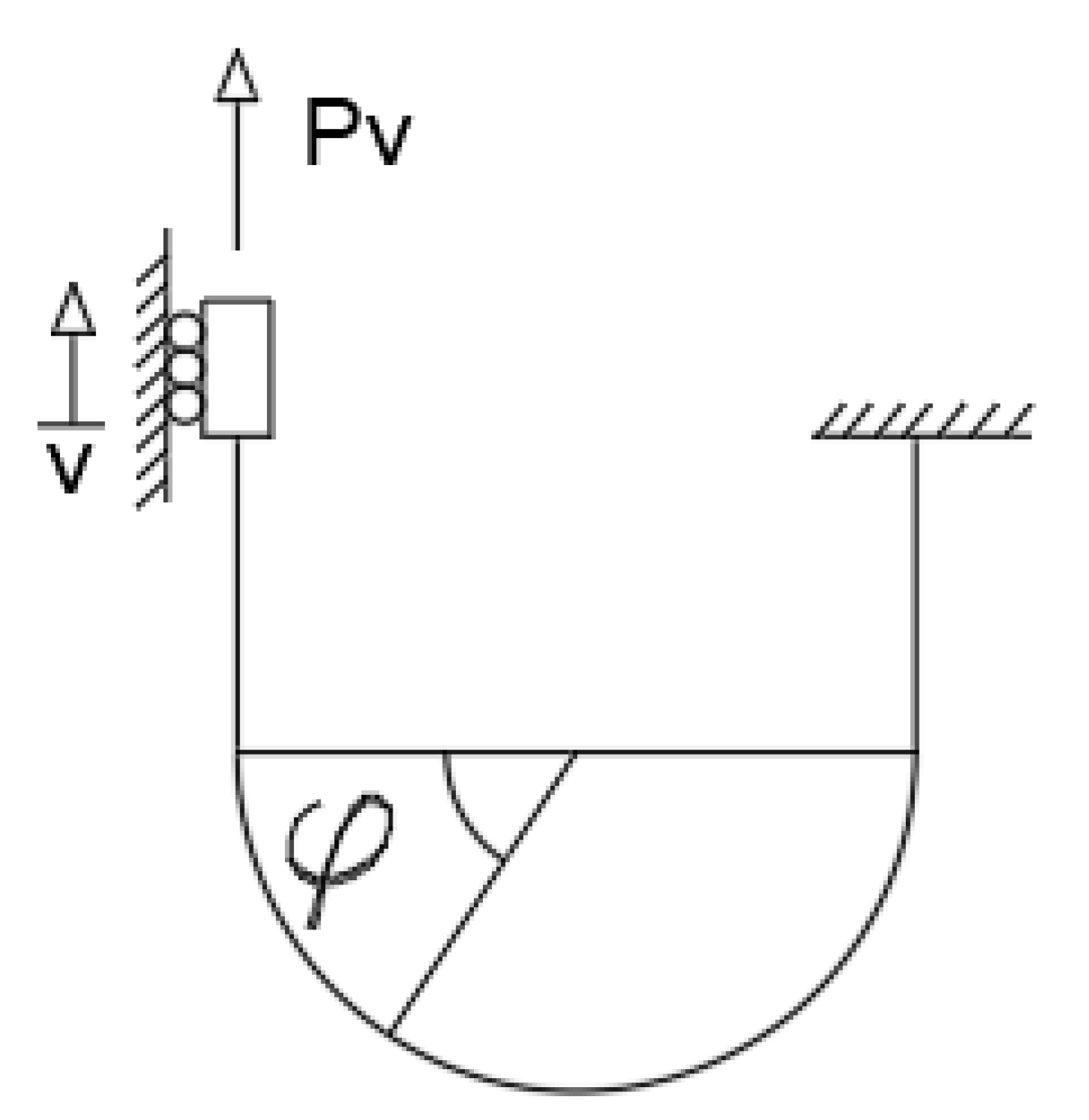
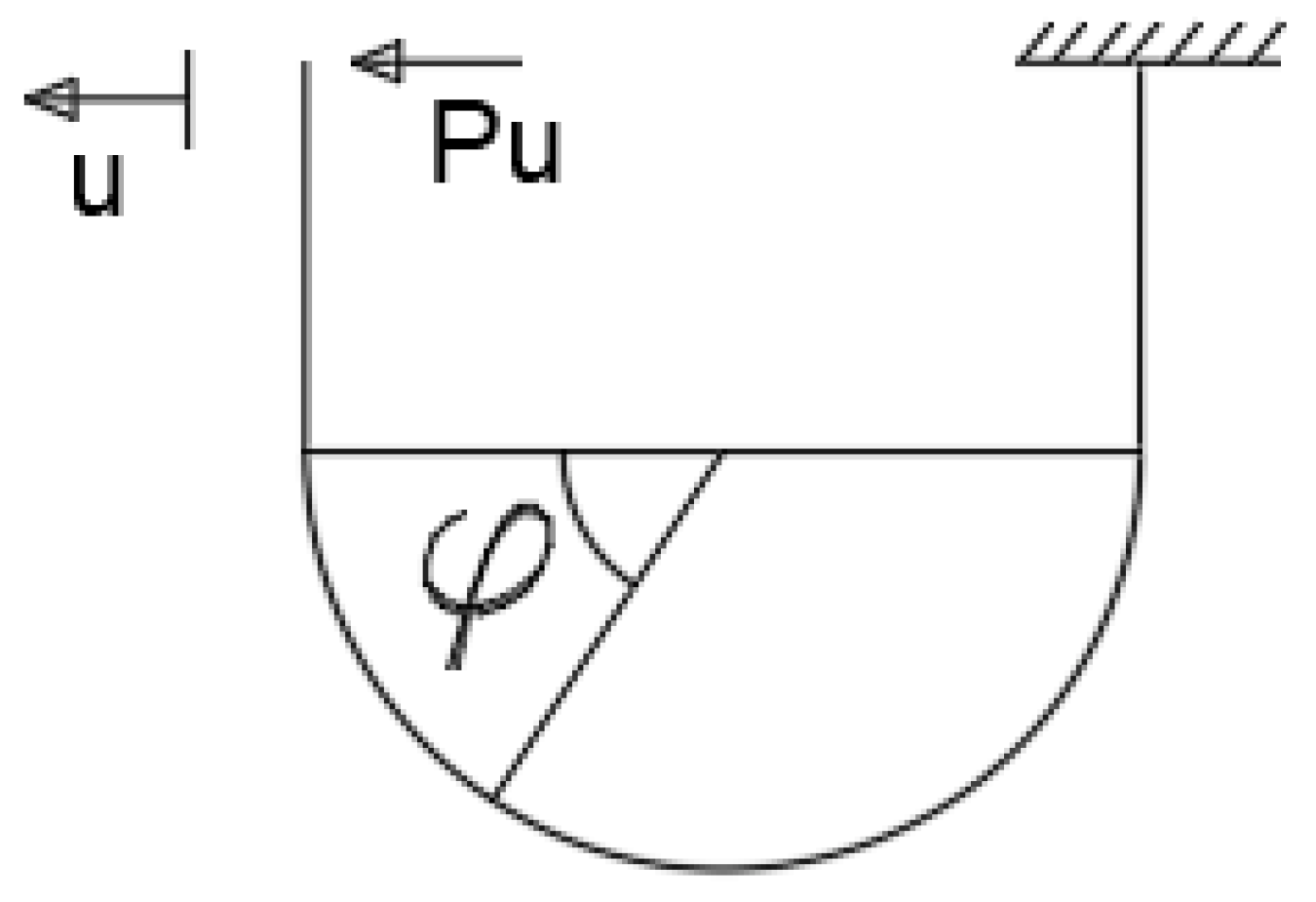

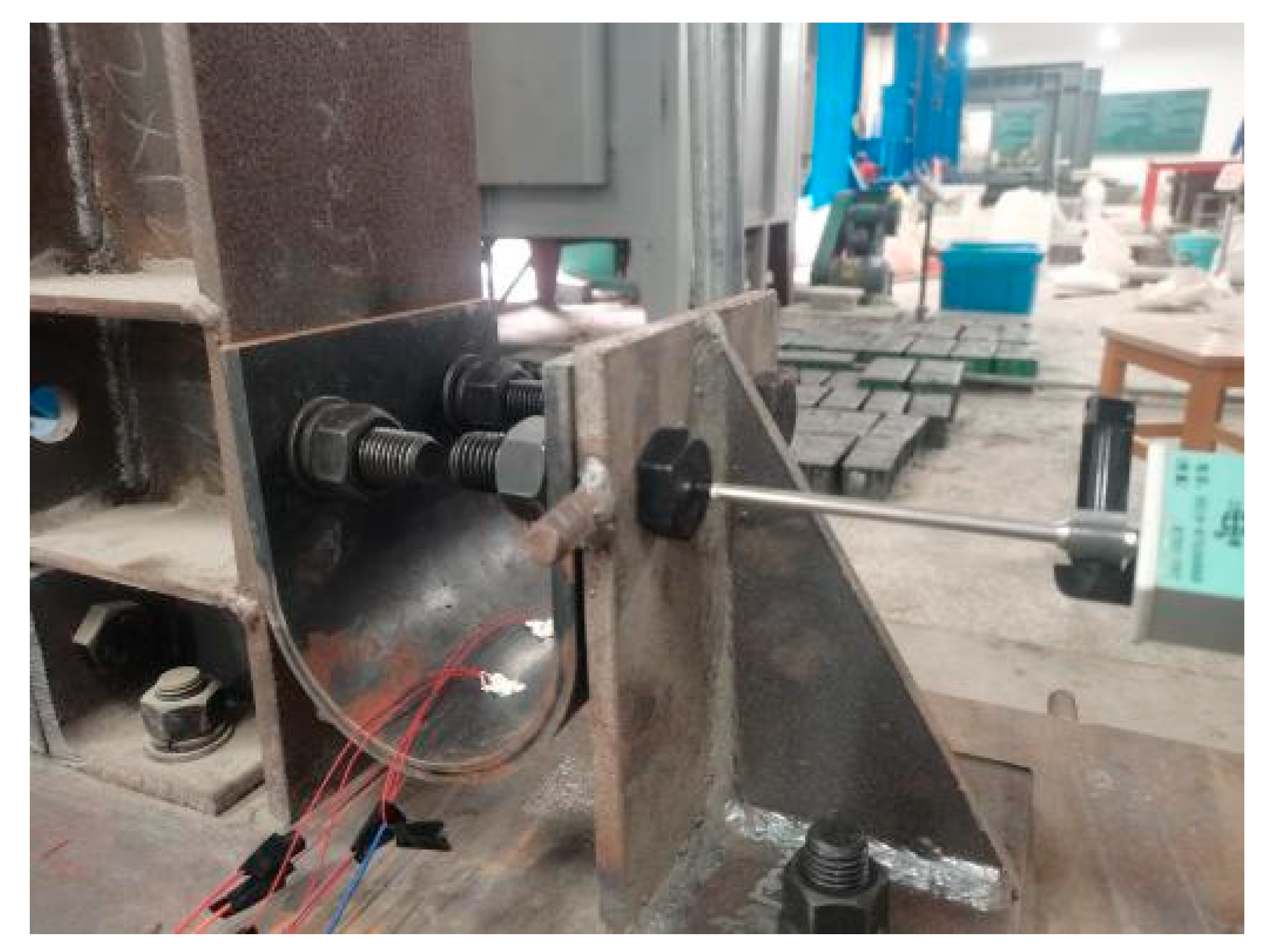

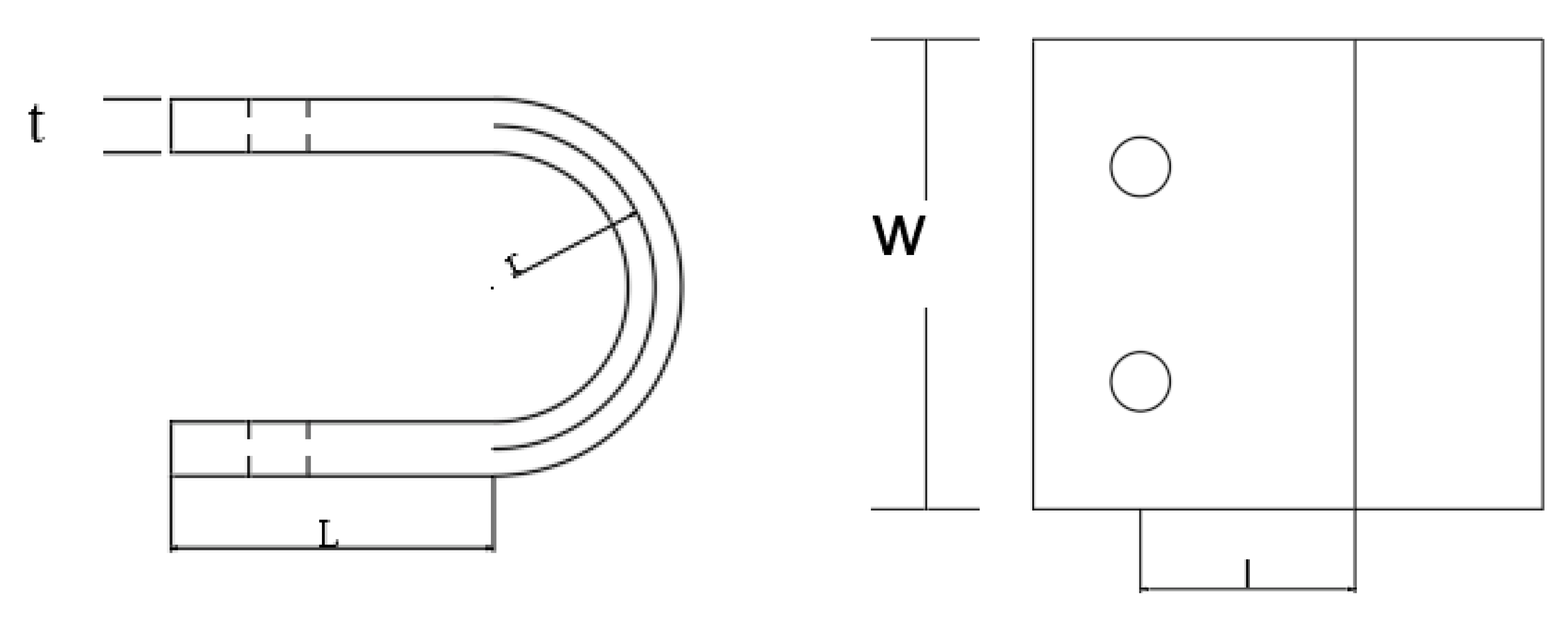


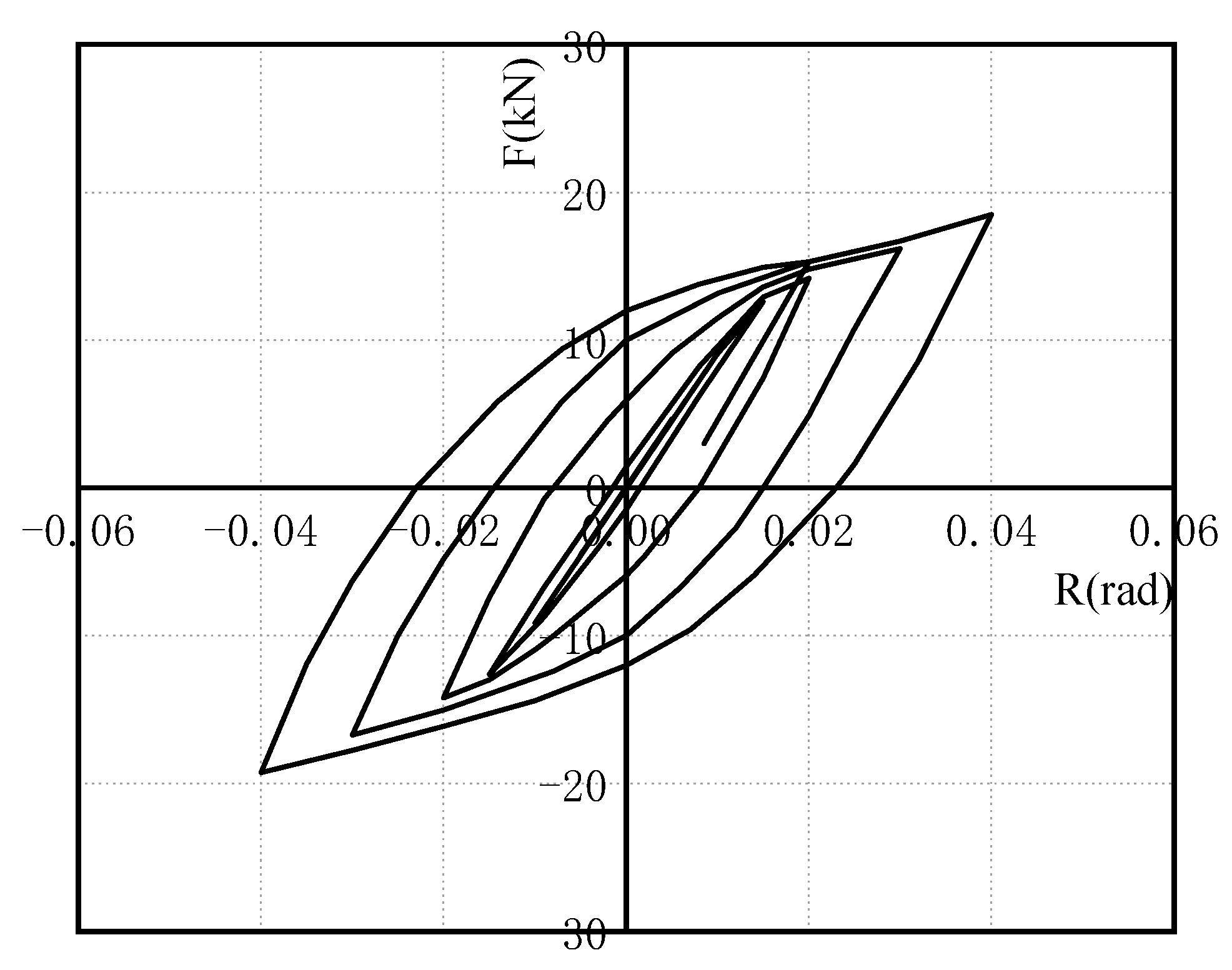
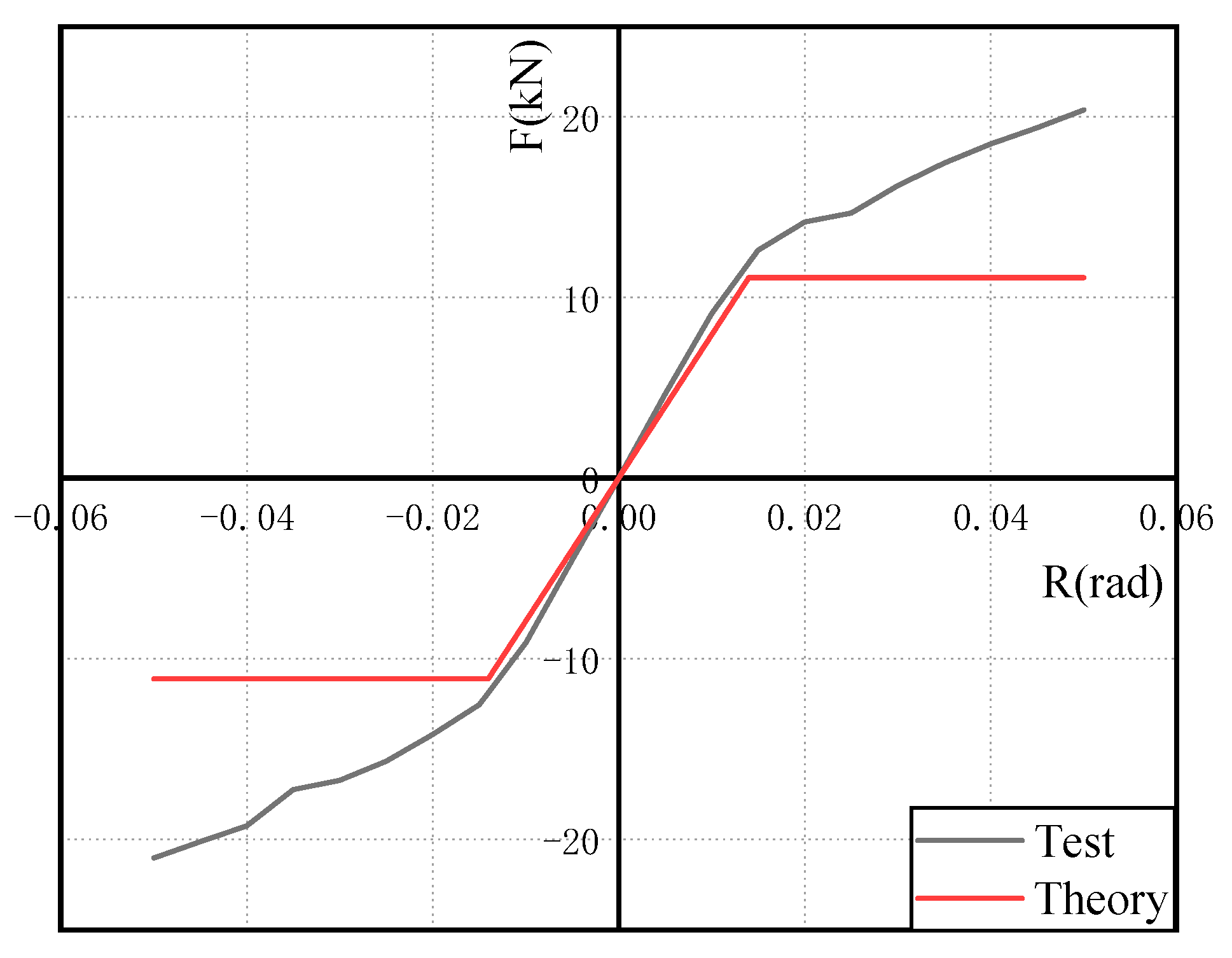
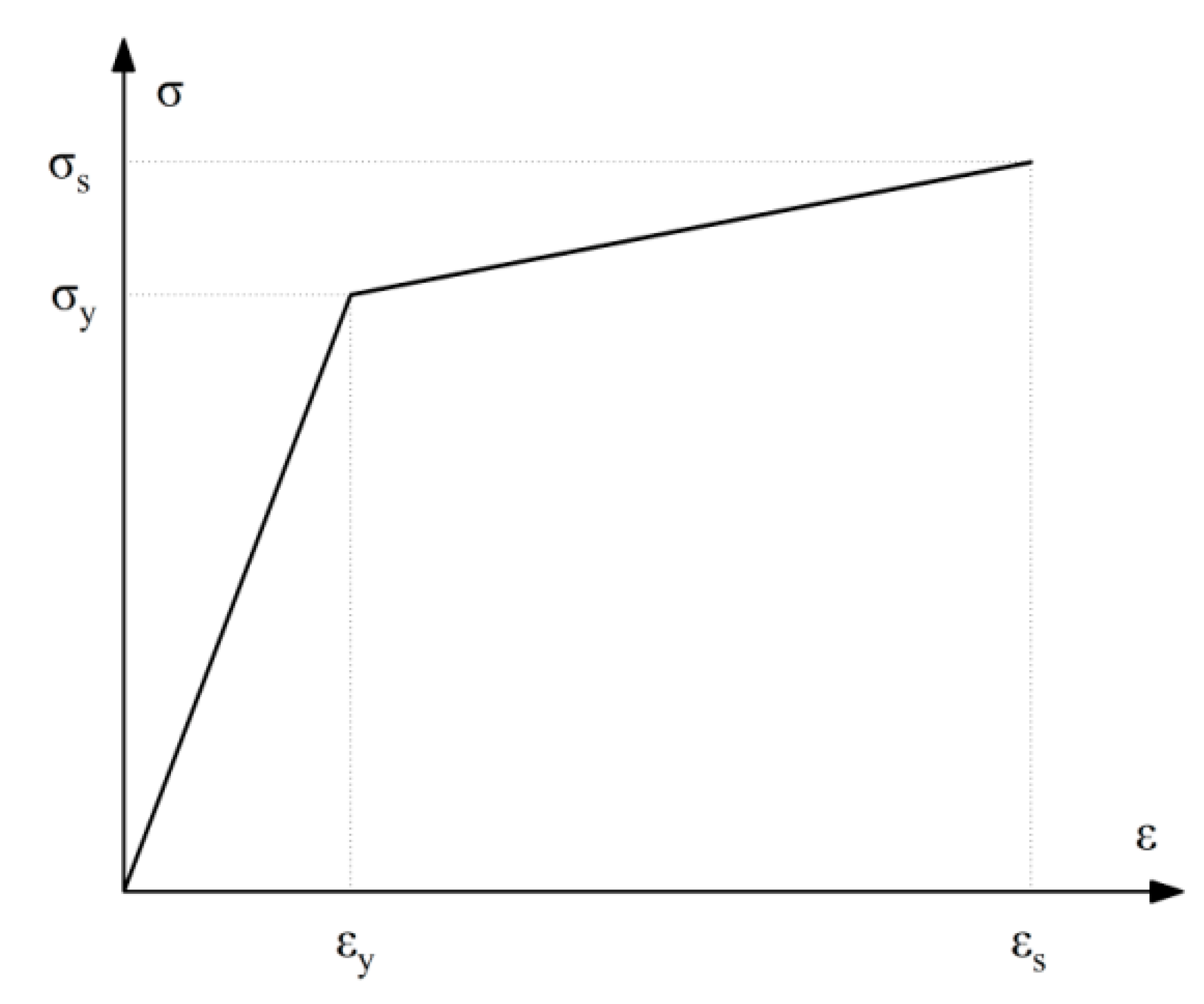




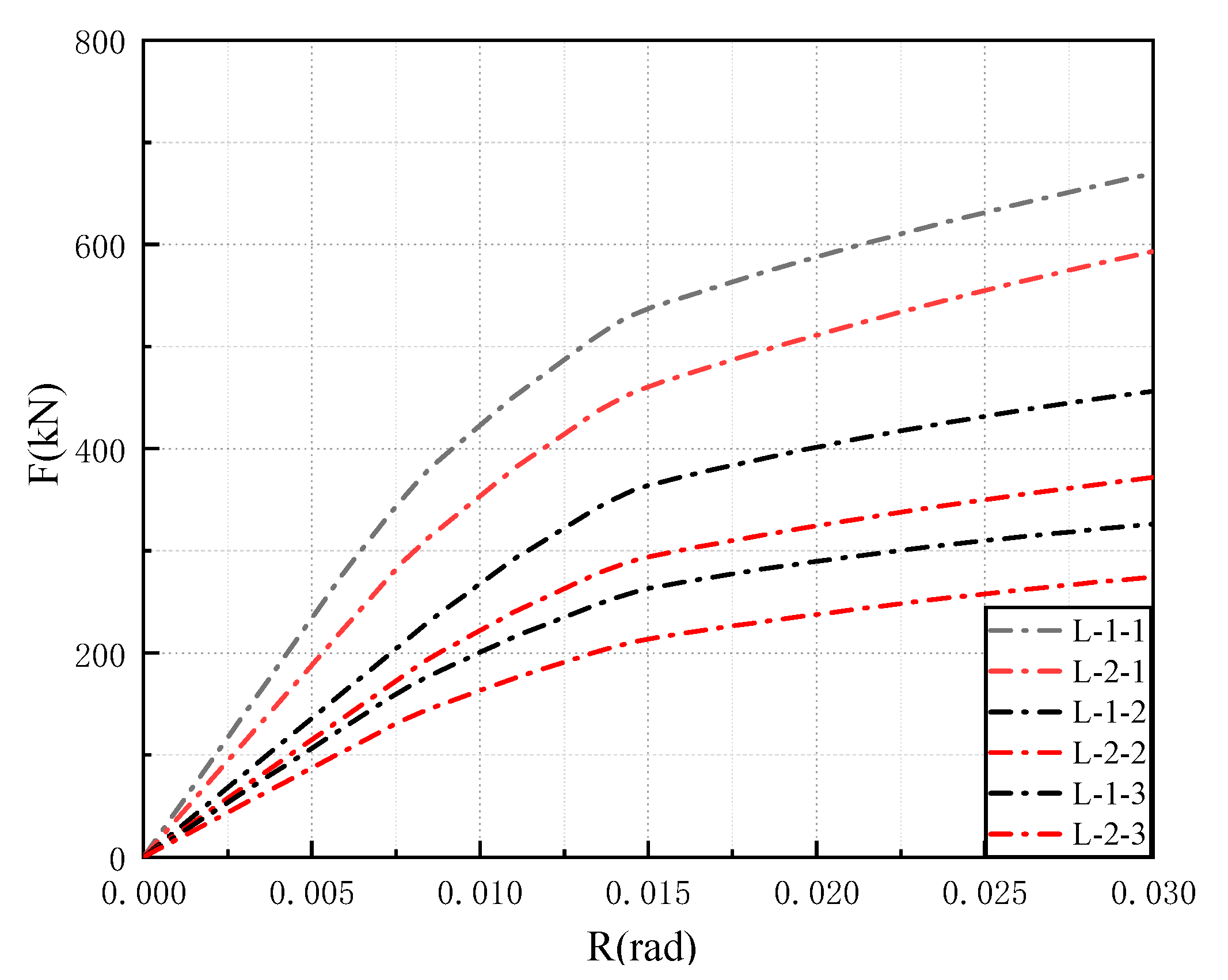

| Size | U-Shaped Steel Damper | Beam | Column | |||||
|---|---|---|---|---|---|---|---|---|
| r (mm) | w (mm) | w (mm) | l (mm) | H (mm) | (mm) | (mm) | (mm) | |
| 60 | 175 | 20 | 80 | 1500 | 250 | 220 | 1800 | |
| Materials | Yield Strength (N/mm2) | Ultimate Strength (N/mm2) | Elastic Modulus/MPa | Ultimate Strain | |
|---|---|---|---|---|---|
| Beam, Column, Angle steel | Q345B | 384.31 | 543.28 | 209000 | 0.04 |
| U-shaped steel damper | Q235B | 306 | 471 | 205460 | 0.04 |
| High-strength bolt | 10.9S | 940 | 1040 | 212000 | 0.05 |
| Initial Stiffness (kN/rad) | Yield Load (kN) | ||||
|---|---|---|---|---|---|
| Theory | Test | Inaccuracy (%) | Theory | Test | Inaccuracy (%) |
| 969.56 | 1012 | 4.45 | 11.10 | 13.11 | 18.21 |
| Interlaminar deformation angle (rad) | 0.01 | 0.015 | 0.02 | 0.03 |
| Equivalent viscous damping coefficient | 0.0561 | 0.836 | 0.1461 | 0.2877 |
| Parameters | Xu | Xy | μ |
| Specimens | 72 | 27 | 2.6 |
| Model | Story | Connect | Initial Stiffness (kN/rad) | Interlaminar Deformation Angle (rad) | Yield Load (kn) |
|---|---|---|---|---|---|
| L-1 | 1 | Rigidity | 46824 | 0.0078 | 354.26 |
| 2 | 27200 | 0.0092 | 250.92 | ||
| 3 | 21328 | 0.0074 | 157.83 | ||
| L-2 | 1 | Rigidity semi-rigidity composite | 32682 | 0.0078 | 292.08 |
| 2 | 23019 | 0.0091 | 207.17 | ||
| 3 | 17441 | 0.0076 | 132.55 |
Publisher’s Note: MDPI stays neutral with regard to jurisdictional claims in published maps and institutional affiliations. |
© 2022 by the authors. Licensee MDPI, Basel, Switzerland. This article is an open access article distributed under the terms and conditions of the Creative Commons Attribution (CC BY) license (https://creativecommons.org/licenses/by/4.0/).
Share and Cite
Qu, C.-X.; Xu, Y.-W.; Gao, J.-H.; Zhou, W.-H.; Zheng, B.-Z.; Li, P. Mechanical Performance Study of Beam–Column Connection with U-Shaped Steel Damper. Materials 2022, 15, 7085. https://doi.org/10.3390/ma15207085
Qu C-X, Xu Y-W, Gao J-H, Zhou W-H, Zheng B-Z, Li P. Mechanical Performance Study of Beam–Column Connection with U-Shaped Steel Damper. Materials. 2022; 15(20):7085. https://doi.org/10.3390/ma15207085
Chicago/Turabian StyleQu, Chun-Xu, Yu-Wen Xu, Jin-He Gao, Wei-Hao Zhou, Bao-Zhu Zheng, and Peng Li. 2022. "Mechanical Performance Study of Beam–Column Connection with U-Shaped Steel Damper" Materials 15, no. 20: 7085. https://doi.org/10.3390/ma15207085




